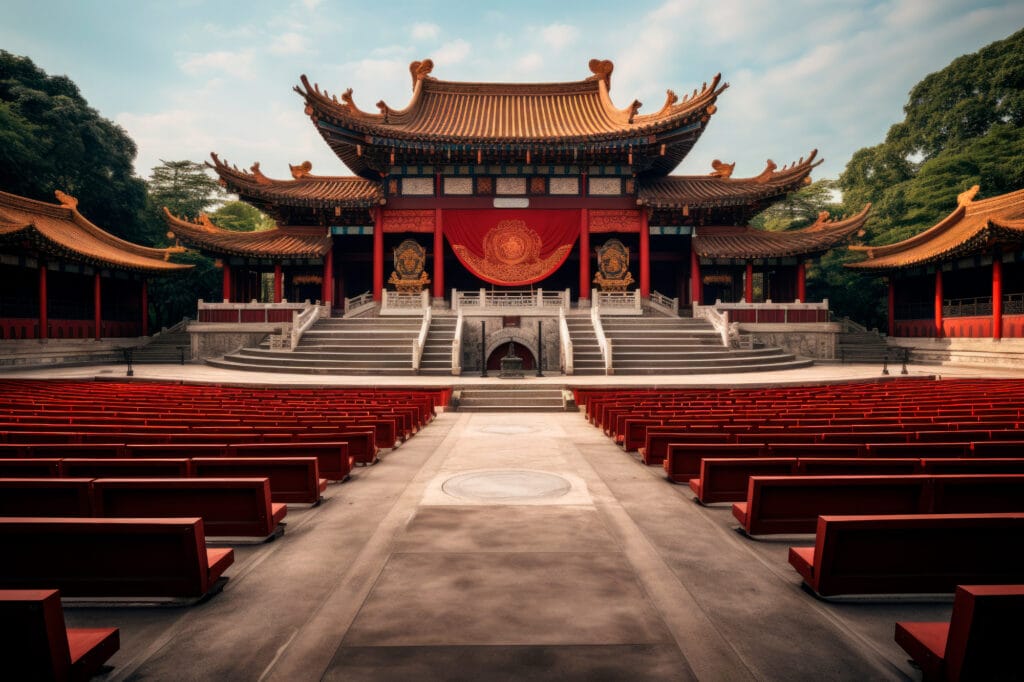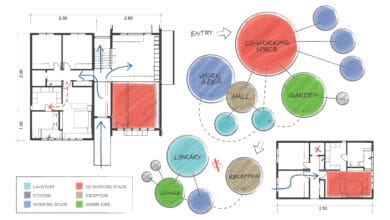Nature’s Role: How Did Daoism Influence Chinese Architecture?

How did Daoism influence Chinese Architecture? Daoism, an ancient Chinese philosophy rooted in harmony with nature, has influenced Chinese buildings for centuries. Its core principles; balance, simplicity, and connection with the natural environment are evident everywhere from ordinary homes to grand temples. This influence can be seen in the way structures flow into their surroundings, a reflection of Daoist philosophy: Wu Wei, meaning action by inaction.
In this article, we’ll explore how did Daoism influence Chinese Architecture through architectural forms, symbolism, and artistic expressions across centuries.
Principles of Daoism in Architecture
At its heart, the essential design criteria derived from Daoist philosophy are that buildings should exist in harmony with nature rather than dominate it. Unlike rigid, overpowering structures found in many Western styles, traditional Chinese architecture evokes a sense of fluidity, open spaces, and natural materials in design.
One of the most distinctive aspects of Daoist-inspired architecture is the importance of Qi- the invisible life energy that Daoists believe flows through all things. The careful placement of doors, windows, and courtyards ensures the uninterrupted flow of Qi, creating spaces that feel peaceful and alive. Feng Shui, another key concept influenced by Daoism, determines building orientation, site selection, and spatial arrangement to maximize positive energy.
Key Features of Daoist Architecture
1. Organizing spaces according to Qi (energy flow along spatial lines).
2. The use of natural materials such as wood, stone, and clay.
3. Curved roofs and open courtyards for an indoor-outdoor connection.
4. The influence of Feng Shui principles in site selection and building orientation.
In a Daoist-inspired home or temple, nature is not just outside the walls, it’s an integral part of the design itself. Let’s learn more about how did Daoism influence Chinese Architecture further.
How Did Daoism Influence Chinese Architecture?
The influence of Daoism on traditional Chinese buildings is most evident in their adaptability and organic forms. Western architecture emphasizes strict symmetry. Daoist-built structures, however, blend gently into the landscape rather than imposing upon it.
One example is the traditional siheyuan, or courtyard house, where rooms are arranged around a central open space. This design encourages natural ventilation and provides a quiet retreat disconnecting from the outside busy world. These simple dwellings are not just places to live but an application of Daoist beliefs highlighting balance and inner harmony.
Likewise, while the pagoda originated as a Buddhist structure, its design reflects many Daoist thoughts. Their tiered design and softly angled roofs imitate mountain peaks, therefore strengthening the link between heaven and earth. Also, imperial structures like the Forbidden City integrate Daoist principles, with carefully planned symmetry and alignment to maintain cosmic harmony.
Daoism’s Role in Chinese Temple Design
When it comes to sacred spaces, how did Daoism influence Chinese Architecture is especially evident in temple design. Daoist temples are not just places of worship; they are carefully constructed sanctuaries in harmony with nature.
In contrast to grand, tall cathedrals or solid stone churches, Daoist temples are often situated in forests, by rivers, or near mountains. These locations aren’t chosen at random; they are carefully chosen to harmonize with the energy of the land. Temples use rock formations, flowing water, and plants, reinforcing the Daoist concept that humanity and nature are connected.

Symbolic Elements in Daoist Temples
1. Dragons – Represent cosmic energy and power.
2. Phoenixes – Symbolize balance and rebirth.
3. Moon Gates – Circular openings that signify unity and harmony.
4. South-facing buildings – Associated with life, warmth, and positive energy.
Temple entrances often feature Taoist symbolism in Chinese architecture, such as dragon carvings and celestial gates. These elements are not only decorative, but they also serve as spiritual thresholds, marking the transition from the secluded spaces to the sacred. Find out more about how classical architectural elements influence modern design today.
Taoist Symbolism in Chinese Architecture
Daoist philosophy is tied with symbolism, and Taoist symbolism in Chinese architecture can be found in almost every design detail. Every carving, color, and structure carries meaning, reinforcing the philosophy’s core beliefs.
Additionally, the orientation of buildings also follows symbolic guidelines. Many Daoist temples and palaces face south, a direction connected to life, warmth, and positive energy. Everything, from roof decorations to the layout of gardens, has a purpose and is meaningful, creating spaces that are both pleasing and spiritually significant. This leads us to reflect: how did Daoism influence Chinese Architecture beyond aesthetics?
Source: National Geographic
Including Nature in Daoist Architecture
The most prominent feature of Daoist-inspired structures is the integration of nature into Daoist architecture. These buildings do not feel separate from the site rather they feel like an organic extension of the landscape.
Ways Daoist Architecture Combines Nature:
1. Mountain temples – Set on cliffs and slopes to harmonize with the landscape.
2. Water features – Ponds, streams, and waterfalls symbolize flow and adaptability.
3. Rock formations – Allow for natural scenery, creating an organic connection.
4. Minimalist gardens – Designed to reflect cosmic balance and peace.
These structures are built using natural materials, bamboo, stone, and clay, that will age over time and become part of the surroundings. The architecture is not meant to stand apart from nature but to evolve alongside it. This concept ties back to the idea of adaptive design, which you can read more about here.
The Impact of Daoism on Chinese Art
Daoism has influenced more than just architecture; it has also impacted Chinese art. Traditional paintings, sculptures, and calligraphy share core ideas derived from the philosophy of Daoism, such as spontaneity and balance, and a deep respect for nature.
Inkwash paintings, for example, are a direct manifestation of Daoist ideas. The loose, effortless brushstrokes depicting clouds, rivers, and mountains, embody the concept of wu wei – acting under the natural flow of life. Similarly, calligraphy is approached as a meditative practice, with each stroke guided by the natural pattern of breath and energy.
Daoist ideologies can be continuously seen in contemporary digital art. Displays of organic forms, flowing structures, and minimalistic compositions suggest an ongoing dialogue between tradition and modernity.
Conclusion
So, how did Daoism influence Chinese Architecture? The answer lies in its focus on harmony, balance, and respect for the natural world. From Daoist architecture principles to Taoist symbolism in Chinese architecture, the philosophy has shaped buildings, temples, and even entire cities in ways that are still visible today. The influence of Daoism is not only in the architectural structures themselves, but in those structures shifting consciousness about the world around us to cultivate a deeper connection and sense of place, either through ancient temples or contemporary interpretations of built space.



